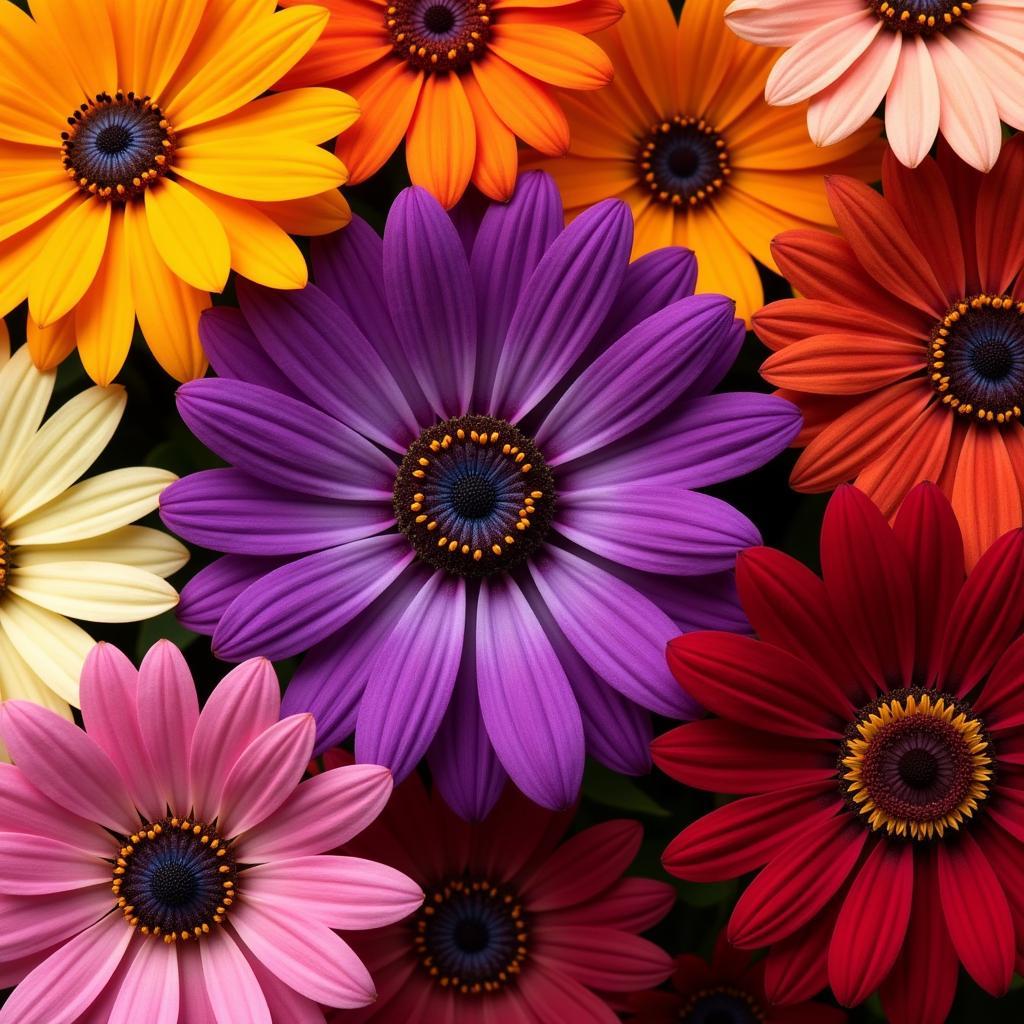Flowers burst forth in a dazzling array of colors, painting meadows and gardens with vibrant hues. But have you ever stopped to wonder why? Why Are Flowers Brightly Colored, while other parts of plants, like stems and leaves, are typically green? The answer, my friend, lies in a fascinating story of survival, attraction, and the magic of nature’s design.
The Science of Color: It’s All About the Light
Before we dive into the reasons behind the vibrant colors of flowers, let’s take a quick look at the science of color itself. Color is essentially how our eyes perceive different wavelengths of light. When light hits an object, some wavelengths are absorbed, while others are reflected. The reflected wavelengths are what we see as color.
Flowers get their color from pigments, which are natural substances that absorb certain wavelengths of light and reflect others. The most well-known pigment in the plant world is chlorophyll, responsible for the green color of leaves and stems. Chlorophyll absorbs light energy for photosynthesis, the process plants use to convert sunlight into energy.
But flowers have a different agenda. Their vibrant colors are not about photosynthesis but about attracting pollinators.
A Symphony of Colors to Entice Pollinators
Flowers are the reproductive parts of plants, and they need a little help from pollinators like bees, butterflies, and birds to spread their pollen and create new plants. Bright colors are a flower’s way of shouting, “Hey, look at me! I’ve got something delicious for you!”
Imagine a bee buzzing through a field of green. Suddenly, a splash of bright yellow or red catches its eye. That’s a flower sending out a beacon, and the bee knows it’s time for a tasty treat of nectar and pollen.
Different pollinators are attracted to different colors. For example:
- Bees are particularly drawn to blue, purple, and yellow flowers.
- Butterflies often prefer red, orange, and yellow blooms.
- Hummingbirds are highly attracted to red and orange flowers.
Beyond Color: Patterns, Shapes, and Scents
While color plays a starring role in attracting pollinators, flowers don’t stop there. They employ a whole arsenal of tricks, including:
- Patterns: Some flowers have intricate patterns on their petals, like stripes or spots, that act as guides, leading pollinators towards the nectar and pollen.
- Shapes: From the trumpet-shaped blooms that perfectly fit a hummingbird’s beak to the flat, open flowers that welcome butterflies, each flower’s shape is designed to facilitate pollination by specific creatures.
- Scents: The sweet fragrance of many flowers is irresistible to pollinators, adding another layer of attraction.
A World of Color: The Diversity of Flower Hues
The diversity of flower colors is truly astounding. From the purest white to the deepest black, flowers flaunt every shade imaginable. This incredible variety is due to the presence of different pigments, including:
- Carotenoids: These pigments produce yellow, orange, and red colors and are responsible for the vibrant hues of sunflowers, marigolds, and poppies.
- Anthocyanins: These pigments give us blue, purple, and red flowers, like violets, lavender, and roses.
- Betalains: Found in a smaller group of plants, betalains create vibrant red and yellow colors, like those seen in beets and bougainvillea.
 Flower Pigments
Flower Pigments
More Than Just Pretty Faces: The Significance of Flower Colors
The vibrant colors of flowers are a testament to the power of natural selection. Flowers that are most successful at attracting pollinators have a better chance of reproducing and passing on their genes. Over time, this has led to the evolution of an incredible diversity of flower colors and forms.
But the significance of flower colors goes beyond mere aesthetics. They play a crucial role in maintaining the delicate balance of our ecosystems. By attracting pollinators, flowers ensure the reproduction of not just themselves but also a vast array of other plants, including many of the fruits, vegetables, and nuts that we rely on for food.
A Colorful World: Appreciating the Beauty of Flowers
The next time you find yourself captivated by the beauty of a flower, take a moment to appreciate the intricate dance of nature at play. The vibrant colors, the alluring scents, the intricate shapes – they’re all part of a grand strategy to ensure the survival and propagation of life.
For within the delicate petals of a flower lies a fascinating story of adaptation, survival, and the enduring power of nature’s artistry.
FAQ
1. Do all flowers have bright colors?
While many flowers are brightly colored to attract pollinators, some flowers, particularly those that rely on wind pollination, may have less conspicuous colors, such as green or brown.
2. Can the color of a flower change?
Yes, the color of some flowers can change depending on factors like soil pH, age, and even the time of day. For instance, some morning glory flowers change from blue to pink as they age.
3. What is the rarest flower color?
Blue is considered the rarest flower color in nature, followed closely by black.
Let’s Connect
Do you have more questions about the fascinating world of flowers or need expert advice on selecting the perfect colors for your home or garden? Contact us at Color Box Hanoi! Our team of color specialists is here to help you create vibrant and inspiring spaces.
Call us at: 0373298888
Email us at: [email protected]
Visit us at: 86 Cầu Giấy, Hà Nội
We’re available 24/7 to assist you.
